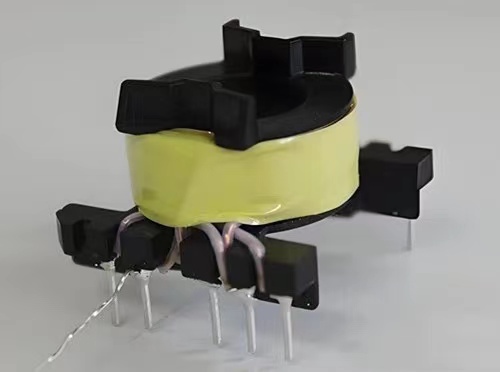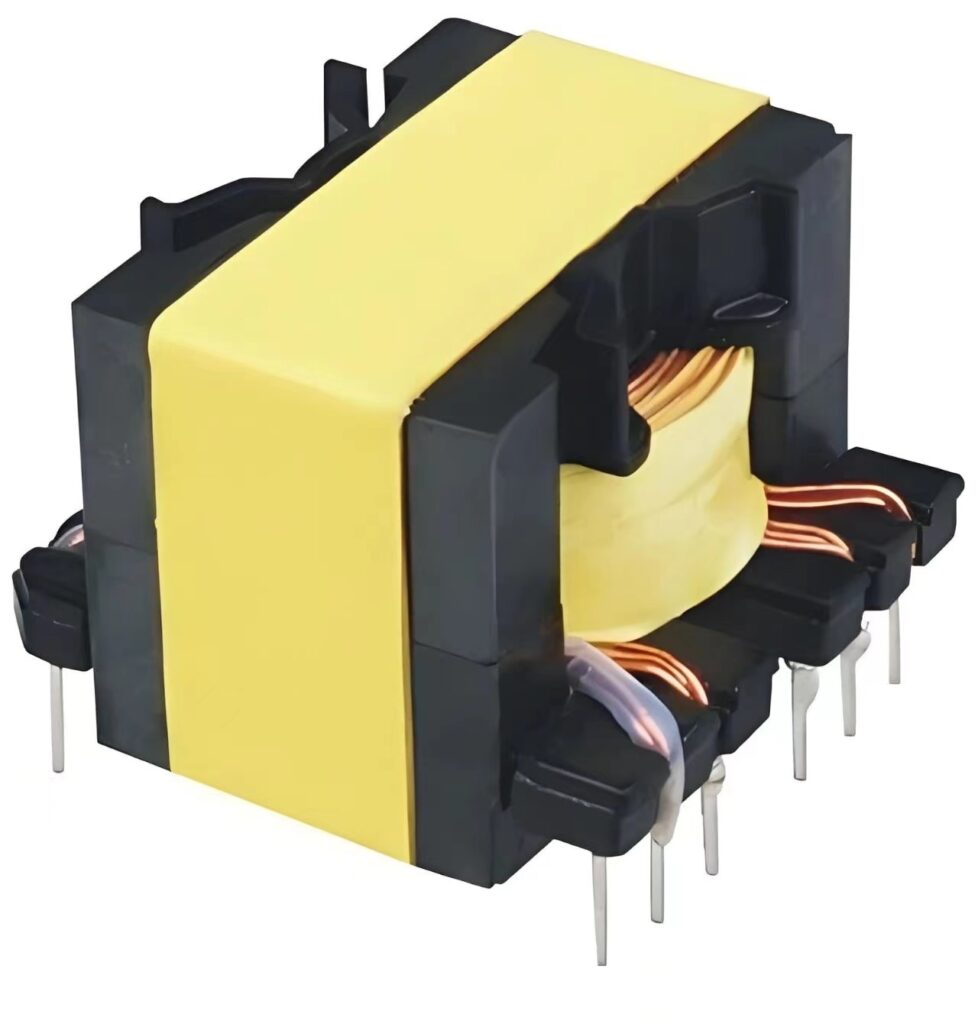Have you ever wondered why your high-frequency transformer isn’t delivering optimal performance? Leakage inductance could be the hidden culprit. In simple terms, leakage inductance occurs when a portion of the magnetic flux generated in the primary winding fails to couple with the secondary winding, essentially “leaking” out. While small amounts are unavoidable, excessive leakage can wreak havoc on your design.
High leakage inductance impacts efficiency, increases electromagnetic interference (EMI), and can cause voltage spikes that damage components. It may also lead to poor circuit reliability, introducing challenges in achieving stable and efficient performance.
But here’s the good news: you can minimize or even optimize leakage inductance with the right design techniques. In this article, I’ll walk you through proven methods to reduce leakage inductance in high-frequency transformers, helping you achieve better efficiency, stability, and overall performance. Let’s transform your challenges into solutions!
Understanding Leakage Inductance
Have you ever wondered why some high-frequency transformers struggle with efficiency or emit excessive noise? The answer often lies in leakage inductance. 这里开始加粗 It occurs when the magnetic flux generated by the primary winding doesn’t fully couple with the secondary winding, leaking into the surrounding air or materials. This unlinked flux creates inductance that doesn’t contribute to energy transfer, leading to performance issues.
This is why managing leakage inductance is critical, especially in high-frequency applications.
The main challenges posed by leakage inductance include:
- Radiated Noise and EMC Problems: Leakage flux generates electromagnetic interference (EMI), potentially disrupting nearby devices
- Reduced Efficiency: Energy lost in leakage diminishes overall transformer performance
- Voltage Spikes: Switching operations amplify the issue, causing high-voltage spikes that may damage components
- Unstable Regulation: Power supplies with excessive leakage often face erratic voltage control

Key Factors Influencing Leakage Inductance
Several factors impact leakage inductance in transformers. Understanding these helps in making design choices that reduce its effects.
1.Magnetic Core Design
The geometry and structure of the core significantly influence flux coupling between windings:
- Closed Cores (e.g., Toroidal, Block-Type Cores): These help contain the flux within the core, reducing leakage.
- Core Gaps: While gaps are sometimes necessary (e.g., for inductors), their size and placement can increase leakage inductance.
2.Winding Arrangement
The winding layout directly affects the proximity and coupling efficiency between the primary and secondary:
- Layer Count: More layers increase separation and leakage.
- Interleaved Windings: Arranging windings in alternating layers can improve coupling.
- Shape and Positioning: Ensuring windings align tightly reduces flux escape.
3.Materials
- Core Material: High-permeability materials help contain flux, minimizing leakage.
- Insulation: Thicker insulation increases separation, leading to higher leakage inductance.
4.Testing Parameters
- Short-Circuiting Secondary Windings: Proper test setup is vital to accurately measure leakage.
- Frequency Considerations: Since leakage inductance grows with frequency, testing should align with operational conditions.
Design Techniques to Minimize Leakage Inductance
Have you ever wondered why some transformers have higher leakage inductance than others, even in similar conditions? The secret often lies in the design and material choices. Leakage inductance isn’t random—it’s the result of specific physical and electrical factors.
This is why understanding these factors is essential to optimizing transformer performance.
Here’s a breakdown of the key elements that influence leakage inductance:
| Factor | Description | Impact on Leakage Inductance |
| Magnetic Core Design | Closed Cores (e.g., Toroidal): Contain magnetic flux effectively. | Reduced leakage inductance. |
| Core Gaps: Necessary for certain designs like inductors but increase flux leakage. | Increased leakage inductance, depending on gap size and placement. | |
| Winding Arrangement | Layer Count: More layers increase the distance between windings. | Higher leakage inductance due to reduced coupling. |
| Interleaved Windings: Alternating primary and secondary layers. | Improved coupling, lowering leakage inductance. | |
| Tight Alignment: Aligning windings closely minimizes flux escape. | Reduced leakage inductance. | |
| Materials | Core Material: High-permeability cores confine magnetic flux. | Helps reduce leakage inductance. |
| Insulation Thickness: Thicker insulation increases separation between windings. | Higher leakage inductance. | |
| Testing Parameters | Short-Circuiting Windings: Proper testing involves shorting unused windings. | Ensures accurate measurement of leakage inductance. |
| Frequency Considerations: Testing should reflect the operational frequency of the transformer. | Leakage inductance grows with frequency, making frequency-specific testing crucial. |

Manufacturing Techniques to Reduce Leakage Inductance
Have you ever wondered why even the best-designed transformers sometimes fail to achieve optimal performance? The answer often lies in manufacturing techniques. Even the most innovative designs require precise execution to minimize leakage inductance and enhance performance.
This is why manufacturing processes play a vital role in achieving the desired results.
Here are the key manufacturing practices that can effectively control leakage inductance:
| Technique | Description | Benefits | Description | Benefits |
| Precision Winding | Using CNC winding machines for uniform and consistent winding layouts. | Ensures tight, uniform winding, reducing gaps and improving magnetic flux coupling. | Use of Computer Numerical Control (CNC) winding machines for consistent and accurate winding layouts. | Ensures uniform and tight winding, reducing gaps and improving flux coupling. |
| Material Optimization | Selecting high-performance materials for core, windings, and insulation. | Thinner Insulating Tape: Reduces the separation between windings while maintaining safety. | Select high-performance materials for insulation, cores, and windings. | Thinner Insulating Tape: Reduces winding separation while meeting safety standards. |
| Advanced Core Materials: Ferrites with low losses at high frequencies enhance transformer efficiency. | Advanced Core Materials: Ferrites with low loss at high frequencies improve transformer efficiency. | |||
| Encapsulation and Potting | Encapsulating windings with high-quality resins to stabilize structures and improve reliability. | Reduces mechanical vibration, enhances durability, and maintains performance under varying conditions. | Stabilize windings with high-quality resins to maintain performance under varying conditions. | Reduces mechanical vibration, enhances long-term reliability, and protects against environmental factors. |

Special Case: When Leakage Inductance is Beneficial
Have you ever wondered why something typically seen as a design flaw, like leakage inductance, could actually improve transformer performance? Surprisingly, in certain applications such as LLC resonant converters, leakage inductance plays a critical and intentional role.
This is why understanding how to harness leakage inductance effectively can open new possibilities for cost and space optimization in transformer design.
Here’s how leakage inductance is used strategically in LLC resonant transformers:
1.Application:
Leakage inductance serves as the resonant inductor in LLC designs, eliminating the need for an external component.
2.Advantages:
- Reduces overall component count and cost.
- Saves valuable PCB space, simplifying the design process.
3.Design Techniques:
- Use dual-slot bobbins to separate primary and secondary windings, achieving the desired inductance while maintaining safety.
- Increase the primary winding turns to precisely adjust the leakage inductance for resonance tuning.
4.Challenges and Trade-Offs:
- Balancing inductance for resonance without compromising efficiency can be complex.
- Requires careful testing to ensure that leakage inductance optimizes performance rather than introducing inefficiencies.
Testing and Quality Assurance
Do you know how critical testing and quality control are in minimizing leakage inductance in high-frequency transformers? Even the most well-designed transformers can falter without rigorous testing and quality assurance processes.
This is why adopting stringent standards and reliable practices is essential to ensure transformers deliver optimal performance and reliability.
Here’s how effective testing and quality control can be achieved:
1.Accurate Testing Standards
- Short-Circuiting Non-Tested Windings: All windings not being tested must be short-circuited to accurately measure leakage inductance.
- Frequency-Specific Measurements: Perform tests at operational frequencies to obtain results that reflect real-world conditions.
2.Quality Control Practices
- 100% Dielectric and Hi-Pot Testing: Verify insulation integrity and prevent leakage-related risks.
- Material Inspections: Regularly check insulation thickness, bobbin quality, and core uniformity to maintain consistent performance.
Conclusion:
Leakage inductance is a double-edged sword in transformer design. While it’s essential to minimize it in most scenarios, there are cases where controlled leakage inductance can enhance circuit performance. With proper design techniques, material choices, and manufacturing practices, you can achieve optimal performance in high-frequency transformers.
Unicreed is at the forefront of delivering top-quality transformers tailored to your specific needs. Whether you’re looking to reduce leakage inductance or incorporate it for specialized applications, our solutions ensure efficiency, reliability, and compliance with industry standards. Contact us at sales@unicreed-transformer.com to learn more about our customizable transformer offerings.



